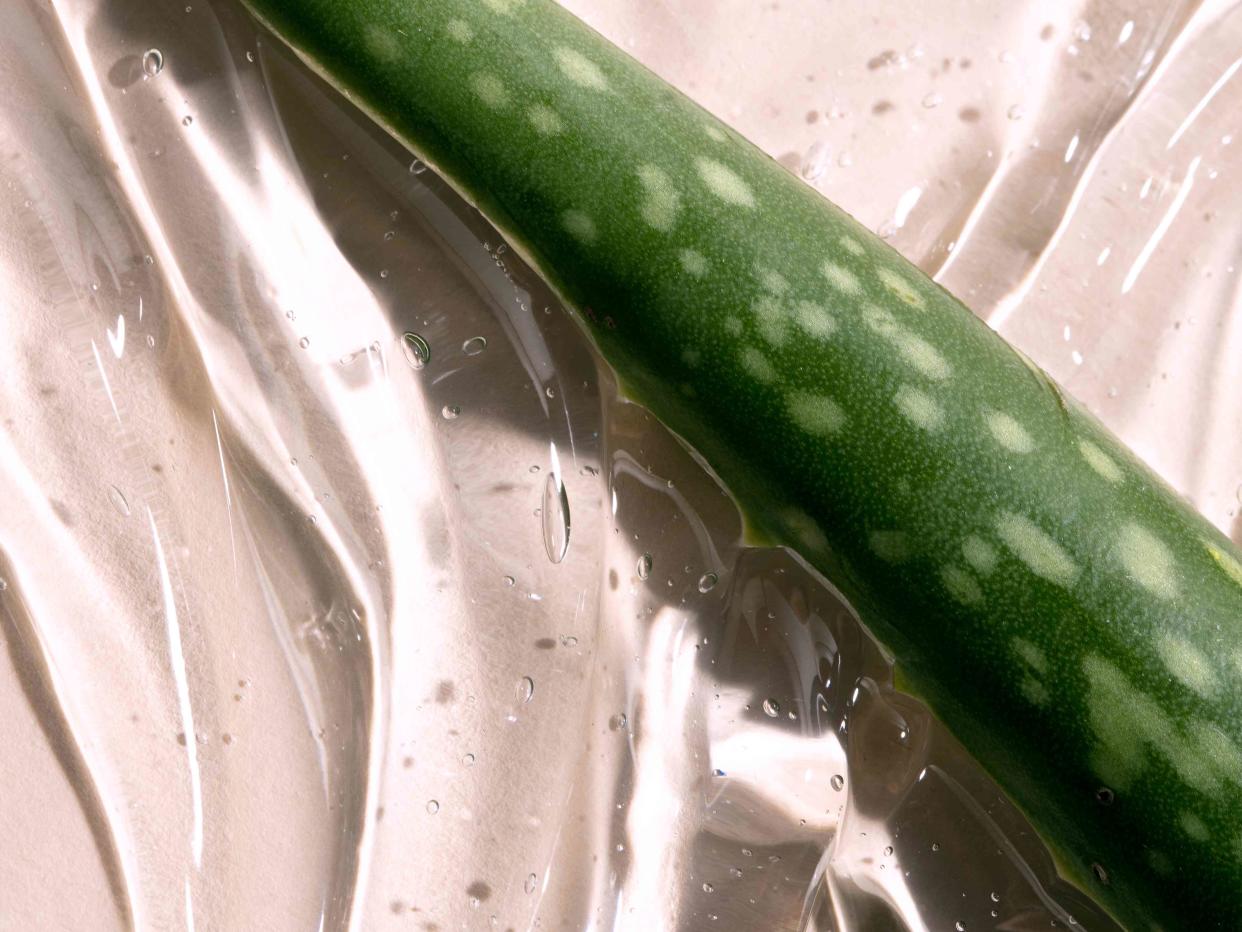This DIY Aloe Vera Hair Mask Will Help Nourish Your Hair and Scalp

Liz DeSousa / Byrdie
DIY-ing a hair mask can feel daunting for those not well-versed in the DIY beauty space. But there's no need to fear: Whipping up a nourishing mask is much easier than you think. And it's even easier when it only takes two or three ingredients to get healthier strands and a happier scalp—like, for instance, aloe vera.
Read on for our super simple DIY aloe vera hair mask recipe and aloe vera insights from board-certified dermatologists Marisa Garshick, MD, FAAD, and Blair Murphy-Rose, MD.
Meet Our Expert
Marisa Garshick, MD, FAAD, is a board-certified dermatologist with MDCS Dermatology in the New York Metropolitan Area.
Blair Murphy-Rose, MD, FAAD, is a board-certified cosmetic, medical, and surgical dermatologist with the Laser & Skin Surgery Center of New York and a clinical instructor of dermatology at Weill Cornell Medical College.
Benefits of Aloe Vera Hair Masks
Aloe vera has anti-inflammatory and nourishing properties. It can help leave your hair feeling hydrated and your scalp soothed: "The leaf of the aloe vera plant is rich in water, particularly in the innermost layer of the leaf, so it helps to hydrate the scalp and hair and lock in moisture," says Garshick. "As a humectant, aloe vera hydrates by attracting and binding to water," adds Murphy-Rose. These properties make aloe vera hair masks ideal for achieving healthy hair, which can lead to increased shine and decreased damage.
As far as benefitting the scalp, "[Aloe vera] is a well-known anti-inflammatory ingredient that soothes the scalp and can calm irritation like that caused by dandruff or dry skin," Murphy-Rose explains. So, not only will your hair look great when using this mask, but your scalp will feel refreshed. "It is also comprised of vitamins, enzymes, minerals, and sugars, helping to improve overall hair and scalp health," notes Garshick.
Who Should Use One?
Every hair type can benefit from using an aloe vera hair mask; however, "it is likely to be especially helpful for those with a dry scalp and those who have dry, damaged, brittle hair," explains Garshick. Murphy-Rose agrees: "Those with dry hair or an inflamed scalp may benefit most."
How to Make an Aloe Vera Hair Mask
Ingredients
An aloe vera leaf or store-bought aloe vera gel
An occlusive oil of your choosing. We recommend coconut oil, olive oil, or argan oil.
Instructions
If you decide to get an aloe leaf, you will need to extract the gel contents of the leaf. Mix 3-4 tablespoons of the aloe vera gel with 6-8 tablespoons of your preferred oil at room temperature. Stir the mixture until you reach a paste-like consistency. That's it!
Other Ingredients to Consider Adding
If you are focusing on your scalp health and looking to treat dandruff, there are some other ingredients you can consider adding, including apple cider vinegar or tea tree oil.
If your hair is extra dry, consider adding eggs, yogurt, or another oil in addition to the one you already picked (argan oil, coconut oil, olive oil).
How to Use it
If your goal is hair health:
Section the hair into 2-inch sections to ensure the mask is evenly distributed.
Apply the mask beginning at the mid-shaft, working it down to the ends.
Apply the remaining mask to the scalp.
Cover the hair with a shower cap and leave it on for 15-30 minutes.
Wash hair or thoroughly rinse with water to ensure there is no residue.
If you're targeting scalp health and dandruff:
Start by applying the mask directly to a clean scalp.
Apply the remaining mask to the rest of the hair, focusing on the middle to ends.
Repeat steps four and five above.
The Final Takeaway
Aloe vera hair masks are an easy DIY project for anyone looking to support their hair and scalp health. If you experience an itchy scalp or extra dry hair, this mask is worth a try. Aloe vera is rich in anti-inflammatory and antibacterial qualities, making it great for treating various skin conditions and ideal for a hydrating natural hair mask.
Up Next: The 9 Best Hair Masks of 2024, Tested and Approved
Read the original article on Byrdie.

